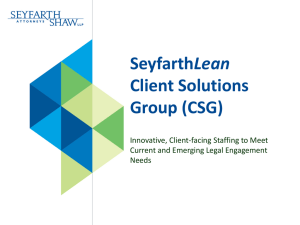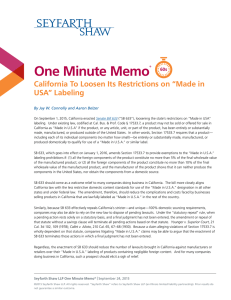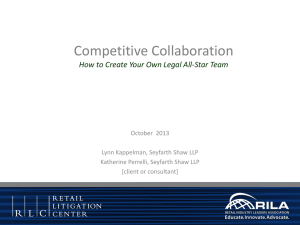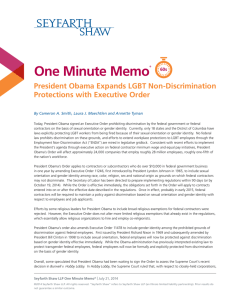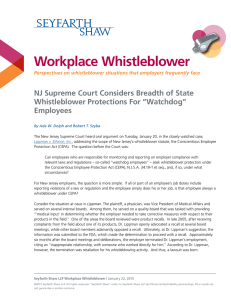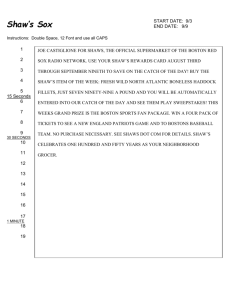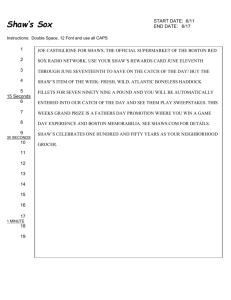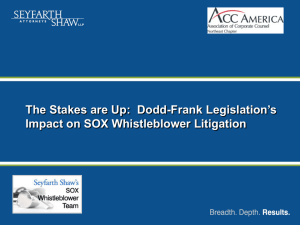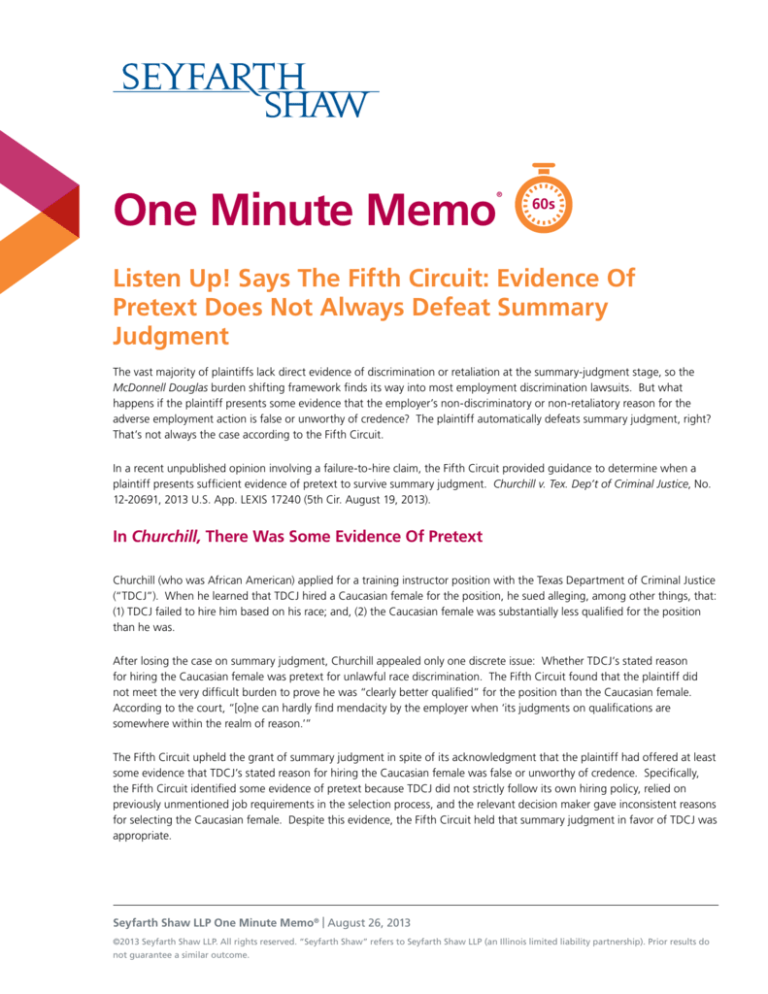
One Minute Memo
®
60s
Listen Up! Says The Fifth Circuit: Evidence Of
Pretext Does Not Always Defeat Summary
Judgment
The vast majority of plaintiffs lack direct evidence of discrimination or retaliation at the summary-judgment stage, so the
McDonnell Douglas burden shifting framework finds its way into most employment discrimination lawsuits. But what
happens if the plaintiff presents some evidence that the employer’s non-discriminatory or non-retaliatory reason for the
adverse employment action is false or unworthy of credence? The plaintiff automatically defeats summary judgment, right?
That’s not always the case according to the Fifth Circuit.
In a recent unpublished opinion involving a failure-to-hire claim, the Fifth Circuit provided guidance to determine when a
plaintiff presents sufficient evidence of pretext to survive summary judgment. Churchill v. Tex. Dep’t of Criminal Justice, No.
12-20691, 2013 U.S. App. LEXIS 17240 (5th Cir. August 19, 2013).
In Churchill, There Was Some Evidence Of Pretext
Churchill (who was African American) applied for a training instructor position with the Texas Department of Criminal Justice
(“TDCJ”). When he learned that TDCJ hired a Caucasian female for the position, he sued alleging, among other things, that:
(1) TDCJ failed to hire him based on his race; and, (2) the Caucasian female was substantially less qualified for the position
than he was.
After losing the case on summary judgment, Churchill appealed only one discrete issue: Whether TDCJ’s stated reason
for hiring the Caucasian female was pretext for unlawful race discrimination. The Fifth Circuit found that the plaintiff did
not meet the very difficult burden to prove he was “clearly better qualified” for the position than the Caucasian female.
According to the court, “[o]ne can hardly find mendacity by the employer when ‘its judgments on qualifications are
somewhere within the realm of reason.’”
The Fifth Circuit upheld the grant of summary judgment in spite of its acknowledgment that the plaintiff had offered at least
some evidence that TDCJ’s stated reason for hiring the Caucasian female was false or unworthy of credence. Specifically,
the Fifth Circuit identified some evidence of pretext because TDCJ did not strictly follow its own hiring policy, relied on
previously unmentioned job requirements in the selection process, and the relevant decision maker gave inconsistent reasons
for selecting the Caucasian female. Despite this evidence, the Fifth Circuit held that summary judgment in favor of TDCJ was
appropriate.
Seyfarth Shaw LLP One Minute Memo® | August 26, 2013
©2013 Seyfarth Shaw LLP. All rights reserved. “Seyfarth Shaw” refers to Seyfarth Shaw LLP (an Illinois limited liability partnership). Prior results do
not guarantee a similar outcome.
Some Evidence Of Pretext Is Not Always Sufficient To Defeat Summary Judgment
The Fifth Circuit, citing the Supreme Court in Reeves v. Sanderson Plumbing Prods., Inc., stated that “although a plaintiff may
have set forth sufficient evidence to reject the defendant’s proffered explanation, it may still present a circumstance where
‘no rational factfinder could conclude that the action was discriminatory.’ This could occur when ‘the record conclusively
revealed some other, nondiscriminatory reason for the employer’s decision, or if the plaintiff created only a weak issue of fact
as to whether the employer’s reason was untrue and there was abundant and uncontroverted independent evidence that no
discrimination had occurred.’” According to the Fifth Circuit, this was one of those cases.
Here, the primary decision maker was an African American male who had hired other African Americans for three of the
four training instructor positions available at that time. The only training instructor position TDCJ did not hire an African
American for was the one to which the plaintiff applied. According to the Fifth Circuit, the plaintiff’s subjective belief that
race was a motivating factor was not supported by the record, and “no rational factfinder could conclude that the action was
discriminatory.”
Although Churchill is an unpublished opinion, it provides valuable guidance on the question of pretext at the summaryjudgment stage. Employers should not shy away from the next summary-judgment motion just because there are some
inconsistencies in the employer’s explanations or because the employer did not strictly follow a policy at issue. Remember:
Some evidence of pretext will not automatically doom the employer’s case, particularly when there is other evidence in the
record that conclusively reveals a non-discriminatory or non-retaliatory reason.
By: Steve Shardonofsky and Kendra Paul
Steve Shardonofsky and Kendra Paul are both located in Seyfarth Shaw’s Houston office. If you have questions please
contact your Seyfarth attorney or Steve Shardonofsky at sshardonofsky@seyfarth.com or Kendra Paul at kpaul@seyfarth.com.
www.seyfarth.com
Attorney Advertising. This One Minute Memo is a periodical publication of Seyfarth Shaw LLP and should not be construed as legal advice or a legal opinion on any specific facts
or circumstances. The contents are intended for general information purposes only, and you are urged to consult a lawyer concerning your own situation and any specific legal
questions you may have. Any tax information or written tax advice contained herein (including any attachments) is not intended to be and cannot be used by any taxpayer for the
purpose of avoiding tax penalties that may be imposed on the taxpayer. (The foregoing legend has been affixed pursuant to U.S. Treasury Regulations governing tax practice.)
Seyfarth Shaw LLP One Minute Memo® | August 26, 2013
©2013 Seyfarth Shaw LLP. All rights reserved. “Seyfarth Shaw” refers to Seyfarth Shaw LLP (an Illinois limited liability partnership). Prior results do
not guarantee a similar outcome.

